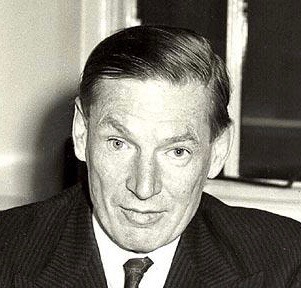People
Commodities journalists make millions in sale of agency stake
Thursday 26 May 2016
 A commodities price reporting agency that has sold a controlling stake, making multi-millionaires of dozens of its journalists, was founded by an editor whose interest in the oil industry began during his time with Reuters.
A commodities price reporting agency that has sold a controlling stake, making multi-millionaires of dozens of its journalists, was founded by an editor whose interest in the oil industry began during his time with Reuters.
Jan Nasmyth (photo) was assistant financial editor at Reuters in the early 1950s. He went on to become an influential oil industry journalist and create a newsletter produced in the basement of his London home. It became Argus Media, a global business with more than 200 journalists producing more than 160 publications.
Argus publishes information on oil prices and provides news in competition with Platts, owned by US publisher McGraw-Hill. Thomson Reuters supplies Argus with content including prices, news and analysis.
It has signed a definitive agreement to enter a strategic partnership with investment firm General Atlantic, which will acquire a 52 per cent stake in the business. The deal, expected to be concluded in the next two months, values Argus at nearly £1 billion. More than a fifth of its total 750 staff hold shares. Members of Nasmyth’s family who own about half of the business will sell their shareholdings, ending their involvement with the company.
In May 1953, Nasmyth started work in Comtelburo, Reuters’ Commercial department, as assistant to financial editor Sydney Gampell. He became interested in commodity prices, and especially oil, which remained stable in times of crisis when all other commodities were volatile. This led him to close contact with the oil industry.
Nasmyth left Reuters in October 1955, going on to work as a journalist on newspapers including The Manchester Guardian and The Daily Telegraph.
In 1968 he transferred to the United Nations in New York, which asked him to prepare a survey of world energy sources. He reasoned that this was impossible without accurate prices, and when the UN failed to come up with the necessary money he decided to do the job on his own account. The result, in 1970, was Europ-Oil Prices, a newsletter which reported on the Amsterdam, Rotterdam and Antwerp petroleum products market. It became an essential pricing tool for the international oil industry.
The publication remained a cottage industry until 1979 when the Iranian revolution threw the energy market into turmoil. Pressed by his staff of two, he agreed to publish a daily oil market report which almost overnight became one of the oil industry's key indicators - and made Nasmyth's fortune.
He ceded control of the company in 1985 and died in 2008 aged 90. ■
- « Previous
- Next »
- 277 of 575